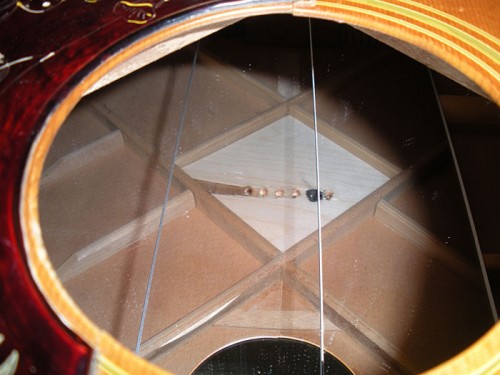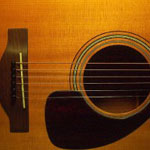 In the first part of this article, I discussed the elements of a basic setup. These include checking the neck relief and the action at the first and twelfth frets, as well as installing new strings and performing a few other basic adjustments.
In the first part of this article, I discussed the elements of a basic setup. These include checking the neck relief and the action at the first and twelfth frets, as well as installing new strings and performing a few other basic adjustments.
In part two, I will explain some relatively inexpensive improvements that you may want to consider when taking your guitar in for adjustment.
A more in-depth setup can include making a new bone nut and/or saddle for the guitar. These two small parts of the guitar are quite important to playability and tone, since they affect both the action and the transfer of energy from the strings to the soundboard. The saddle has the additional function of setting intonation, which determines how well your guitar will play in tune up and down the full length of the neck. Every guitar should have a bone nut and saddle to sound its best.
 Bone is superior to other commonly used materials found on most factory brand guitars, such as “tusq” or plastic. This is because bone is harder and more dense which means it transmits energy more efficiently. This results in better tone. (There is a reason why the inventors of Tusq gave it a bone-sounding name!) I recommend that most guitars coming to my shop for setups get fitted with a bone nut and saddle if they don’t already have them. Previously I mentioned the subject of intonation; having a new saddle made can improve your guitar’s ability to play in tune if the original saddle was not properly compensated. And a well-made custom nut with low slots can improve string spacing and intonation.
Bone is superior to other commonly used materials found on most factory brand guitars, such as “tusq” or plastic. This is because bone is harder and more dense which means it transmits energy more efficiently. This results in better tone. (There is a reason why the inventors of Tusq gave it a bone-sounding name!) I recommend that most guitars coming to my shop for setups get fitted with a bone nut and saddle if they don’t already have them. Previously I mentioned the subject of intonation; having a new saddle made can improve your guitar’s ability to play in tune if the original saddle was not properly compensated. And a well-made custom nut with low slots can improve string spacing and intonation.
A second issue that needs to be checked on every guitar is the condition of the bridge plate. Most players don’t even know what this is, and I was included in that group for many years. The bridge plate is a thin piece of hard wood, usually Maple or Rosewood, that is located inside the guitar under the bridge. The bridge plate serves as a hard surface for the ball end of the strings to ride against, preventing them from ripping through the much softer Spruce top. Because the bridge plate is a part of the “chain of resonance” of the guitar, it is also important to the tone.

Unbeknownst to many guitar players, the bridge plate can be slowly damaged each time they string their guitars. Unless the ball end of the string is seated correctly against the plate and oriented properly with the grain of the top, the ball will chew away at the hole in the plate as the string is tightened. Over time this ruins the plate and if not repaired it will damage the soundboard also. I am able to repair the worn bridge plate to like-new condition without removing it. Even better, I will show you how to correctly re-string the guitar so that the plate will not be damaged in the future. A simple check with a mirror will tell me the condition of your plate and if a repair is needed.
In the third part of this article, I will discuss fret maintenance services.

